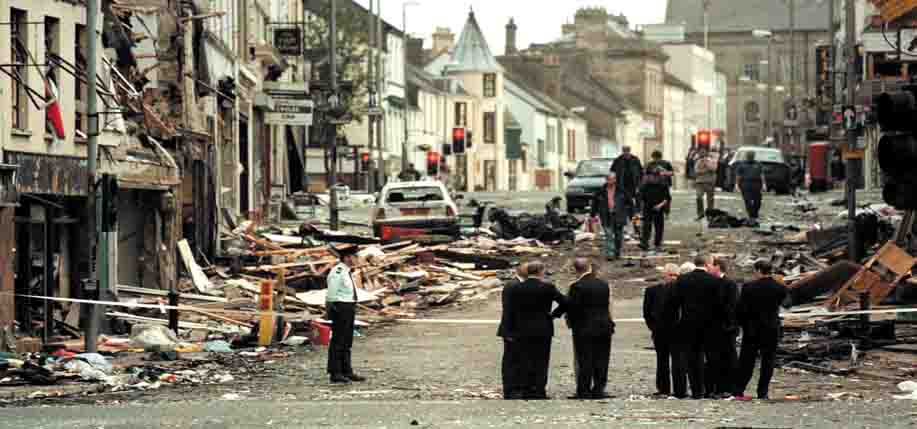Belfast Crown Court acquitted Sean Hoey of all charges in connection with the 1998 Omagh bombing, which claimed the lives of 29 civilians. Hoey, a 38-year-old electrician from Jonesboro, Co. Armagh, was accused of 56 charges relating to the atrocity but Justice Reg Weir ruled that the forensic evidence gathered by the Police Service of Northern Ireland (PSNI) was unreliable. Hoey was acquitted of all charges.
At the end of a trial which lasted ten months Justice Weir concluded that police officers had botched the investigation. He added that two PSNI officers fabricated evidence to strengthen their case and two witnesses called were guilty of “a deliberate and calculated deception.” He also expressed doubt that one person alone was involved in assembling the bombing device.
Sean Hoey is the only person arrested by Northern Ireland authorities in relation to the Omagh bombing. Two suspects currently imprisoned in the Republic await trial.
When it was revealed that the main evidence against him was based on low-copy DNA taken from the timing devices that set off the bomb, the case virtualy collapsed. Although low-copy testing is a widespread practice by prosecutors it is usually offered as supporting evidence rather than forming the basis of a case.
Speaking after the verdict Hoey’s solicitor, Peter Corrigan, said his client was an innocent man who had been completely vindicated. “Today’s judgment – a reasoned, lengthy and well considered judgment – completely vindicated this position that he maintained. Sean Hoey is an innocent man,” said Corrigan.
Outside the court Mr. Hoey’s mother Rita told reporters: “I want the world to know that my son Sean Hoey is innocent. The authorities north and south have held two separate trials, but one witch-hunt.”
Transcripts of the 56-day trial have been sent to the Police Ombudsman’s office in Belfast. An inquiry is expected to review the actions of two PSNI officers who gave evidence at the trial.
A senior Garda (Irish police) spokesman pointed out that the Gardai have dropped using low-copy DNA evidence in other cases. “It was something we looked into but we felt that low-copy DNA samples could be transferred from anywhere and were not particularly reliable,” he said. “We did not consider it to be robust enough at all, certainly for a high-profile investigation. It may have its uses as support evidence if there were witnesses and so on, placing a suspect at the scene. However, we would not consider it at all appropriate to bring a case based on this type of DNA evidence on its own.”
The failure of the PSNI to identify and charge the perpetrators of the 1998 atrocity has led to stinging criticism of its bungled investigation. Relatives of the 29 victims have openly despaired at the lack of investigative progress in nine years since the Co. Tyrone market town was torn asunder.
“There wasn’t an atrocity in the history of the Troubles that more was known about, and yet least was done about,” said Michael Gallagher, who lost his son Aidan in the blast. Lawrence Rush, who lost his wife Elizabeth, felt the case had been grievously mishandled by the PSNI.
Gallagher, Rush and others are demanding that a full cross-border inquiry be conducted to find out who carried out the Omagh bombing in an effort to bring them to justice.


Leave a Reply